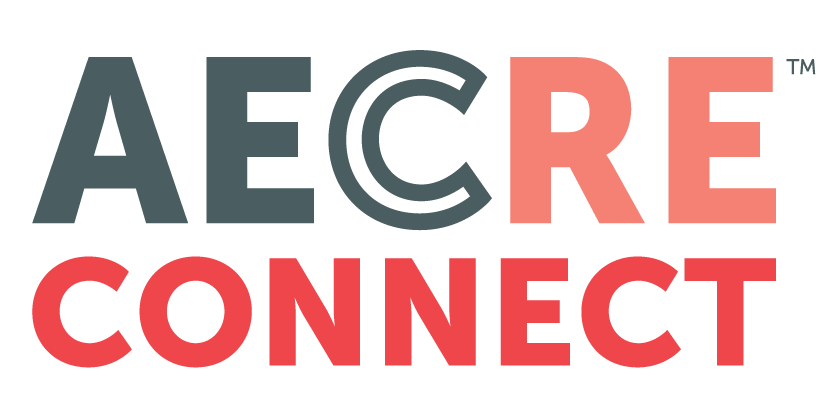Read the original article from ArizonaEconomy.com, a product of Elliott D. Pollack & Company, here.
Having a strong economic development program is critical to any state that wants job growth. That is especially critical to a state like Arizona where population flows will create demand for more jobs. Without the ability to grow jobs, the economy will stagnate and opportunities for individuals to increase their standard of living will diminish. The results would not be pretty.
Since the end of World War II, Arizona has, for the most part, done very well in attracting new jobs that allowed its residents to have job opportunities that, among other things, has kept the state fiscally sound. This has been the long-term focus of both the public and private sector for decades. And most of the time it has worked out well.
There have been some stumbles along the way. Between 1988-1992, the state had a Governor impeached, a scandal that rocked the legislature, suffered the loss of a Super Bowl due to inaction on implementing the Martin Luther King holiday, had real estate issues including the Keating incident and the Keating 5 and had almost every Savings & Loan business in the state go under. The national publicity from these hurt economic development in the state for several years. Fortunately, none of these things changed the basic structure of the state and, thus, the state recovered and flourished. In 2007-2008, the state was one of the epicenters of the national real estate crisis. In addition, the negative effects of passing one of the strictest anti-illegal immigration legislation measures (SB 1070) in the U.S. gave the state an unnecessary black eye. But, again, nothing gave a signal that the state’s pro-business policies changed. Again, some time passed, recovery took place, and we flourished again.
A competitive tax policy is critical to economic development. This includes reasonable, middle of the road, and what most people would consider equitable tax policies for businesses and individuals. These tenets have what has allowed us to do well for decades and even recover from some poor decisions. But our competitive tax position would be at risk under Arizona Proposition 208 otherwise known as the Invest in Ed tax increase.
Proposition 208 would increase the marginal income tax rate for individuals who earn $250,000 or more and couples earning $500,000 or more from 4.5% to 8.0%. Today, less than 1% of filers are in this category. They already account for 24% of the income taxes paid even though they account for less 19% of taxable income in the state.
When relocation specialists put together their data, it will show that Arizona, instead of having a tax rate that was very competitive with other areas of the country (see attached map), would have an income tax rate higher than all but 8 other states. Right now, we have the 15th lowest tax rate out of the 50 states. The 8 states that would still be higher if the proposition passes are all considered high tax states. Those states have also had poor economic development records.
The very real risk here is that any bad publicity and image change from this (and unlike previous versions, this would be permanent) could hinder future economic development efforts in the state. The resultant slower growth could offset the increase in revenues projected by the proponents of the act over time.
While the need to spend more on education may be real, this is not the structure to do it. Not only is the concept patently unfair, it is bad public policy. If you want more money for something that affects everyone, then everyone should have skin in the game.
In addition, keep in mind that the state’s income tax is already very progressive. This new tax rate would put the state at a significant competitive disadvantage. According to experts, nearly doubling Arizona’s top marginal rates would make the state’s individual income tax one of the most unbalanced in the nation insofar as it would be charging very little to most of the population but very high rates to high-income filers and businesses that file individual income taxes. Arizona’s top bracket would be moved from 39th to 9th. Decision makers would certainly take notice.
Again, I am not saying that schools do not need more funding or a better funding structure. What I am saying is that this proposition is not a good approach and could significantly harm the state. Doing harm to the state’s economic engine makes no sense. This particular concept for raising significant money for education needs a lot more thought.
Now, moving on to the economic data.
Last week’s major economic event was the FED has shifted its approach to interest rate policy. It now will place more emphasis on boosting employment and will allow inflation to “temporarily” rise about 2% during expansions. “Temporarily” is undefined. This is a huge policy shift. The focus is now on jobs rather than jobs and inflation. This should keep interest rates lower for longer. This will hurt savers and help borrowers. And the biggest borrower of all is the government. The shift in policy recognizes the big demographic shift that has slowed potential GDP growth from 2.5% to about 1.7%-1.8%. This policy change will not affect things immediately. But, over the next several years, it will be very significant.
As for other data, initial claims for unemployment insurance declined modestly but were still high. Personal income rose modestly. Keep in mind, though, that since there has been no follow up program to the CARES Act, August could be ugly. Thank you sleezy Washington politicians. Disposable personal income was way up from a year ago and modestly up from June. On the other hand, personal consumption expenditures were down from a year ago but up for the month. Consumer confidence was down while consumer sentiment was up. July new orders for durable goods were down from a year ago but were up from June. Mortgage applications were down from a week ago. New home sales were very strong both from a year ago and from a month ago. Median new home prices were up a lot. The NAR pending home sales index continued to rise significantly. And the June S&P/Case-Shiller home price index continued to rise.
In Arizona, initial claims for unemployment continued to rise. Arizona lodging performance continued to be weak. Activity at Sky Harbor showed very modest improvement. And Greater Phoenix housing prices continue to rise much more rapidly than the overall rate of inflation.
U.S. Snapshot:
- The FED announced a policy shift in its approach to interest rates. Jerome Powell, FED Chairman, stated that the FED now believes that “a robust job market can be sustained without causing an outbreak of inflation”. This is likely to keep interest rates lower for a longer period of time. That is likely to drive more investments to stocks. But, in the long run, liquid assets are likely to do less well. Inflation friendly assets should do better.
- Initial claims for unemployment insurance fell modestly last week. Seasonally adjusted filings fell to 1,006,000 from 1,104,000 the previous week. Initial claims stood 368% above year earlier levels.
- Personal income increased in July. It stood 8.2% above a year ago mainly due to monies transferred to people due to the CARES Act. For the month, personal income was up 0.4%. Keep in mind that benefits were significantly reduced due to the lack of action on the part of congress. Were it not for President Trump’s executive order using $44 billion of Disaster Relief Fund money to start up a Lost Wages Assistance Program, the August results would be a lot worse. This is true even with the slow start of the program. Yet, when August results are released next month, the data will tell a less sanguine story.
- Disposable personal income in July was 9.5% above year earlier levels and 0.2% above June.
- Personal consumption expenditures were 2.8% below a year ago but 1.9% above June.
- The Conference Board’s Consumer Confidence index unexpectedly tumbled to a cyclical low in August (84.8 in August vs. 91.7 in July) as the increase in infections reduced consumers views of current events. This result is inconsistent with other measures of consumer well-being as the University of Michigan consumer sentiment index rose from 72.5 in July to 74.1 in August. The Bloomberg index of confidence was also up.
- New orders for manufactured goods were up in July. Durable goods orders were up 11.2% from June but down 5.0% from a year ago. Excluding aircraft, orders were up 1.9% for the month and down 0.2% from a year ago.
- New home sales jumped in July. Sales were up 13.9% from June and 36.3% from a year ago. The median sales price of a new home was $330,600. That’s a 7.2% gain from a year ago.
- The NAR pending home sale index stood a whopping 15.5% above a year ago in July and was up 5.9% from June.
- National hotel occupancy was 48.8%. That’s 31.9% below a year ago.
- TSA passenger throughput has been flat for the last 5 weeks at just under 5 million. Last week’s 4.95 million was 71.4% below year earlier levels.
Arizona Snapshot:
- Initial claims for unemployment insurance in the state were up again last week from 12,775 to 13,681. This is 287% above year ago levels.
- State lodging occupancy in July was 46.5% compared to a year earlier level of 64.0%. Demand was down 28.8% while supply was down 1.9%.
- Operations at Sky Harbor International Airport were down 64.7% from a year ago. Enplaning was down 64.0% while deplaning was down 65.5%.
- Seated diners in the state are gradually increasing. Last week the number was 44.0% below a year ago and was still below mid-June levels.
- Travel to retail and recreational places was 23.4% below a year ago and was also below mid-June levels.
About EDPCo
Elliott D. Pollack & Company (EDPCo) offers a broad range of economic and real estate consulting services backed by one of the most comprehensive databases found in the nation. This information makes it possible for the firm to conduct economic forecasting, develop economic impact studies and prepare demographic analyses and forecasts. Econometric modeling and economic development analysis and planning are also part of our capabilities. EDPCo staff includes professionals with backgrounds in economics, urban planning, financial analysis, real estate development and government. These professionals serve a broad client base of both public and private sector entities that range from school districts and utility companies to law firms and real estate developers.
7505 East Sixth Avenue, Suite 100
Scottsdale, Arizona 85251
480-423-9200
Website | Twitter | Facebook



